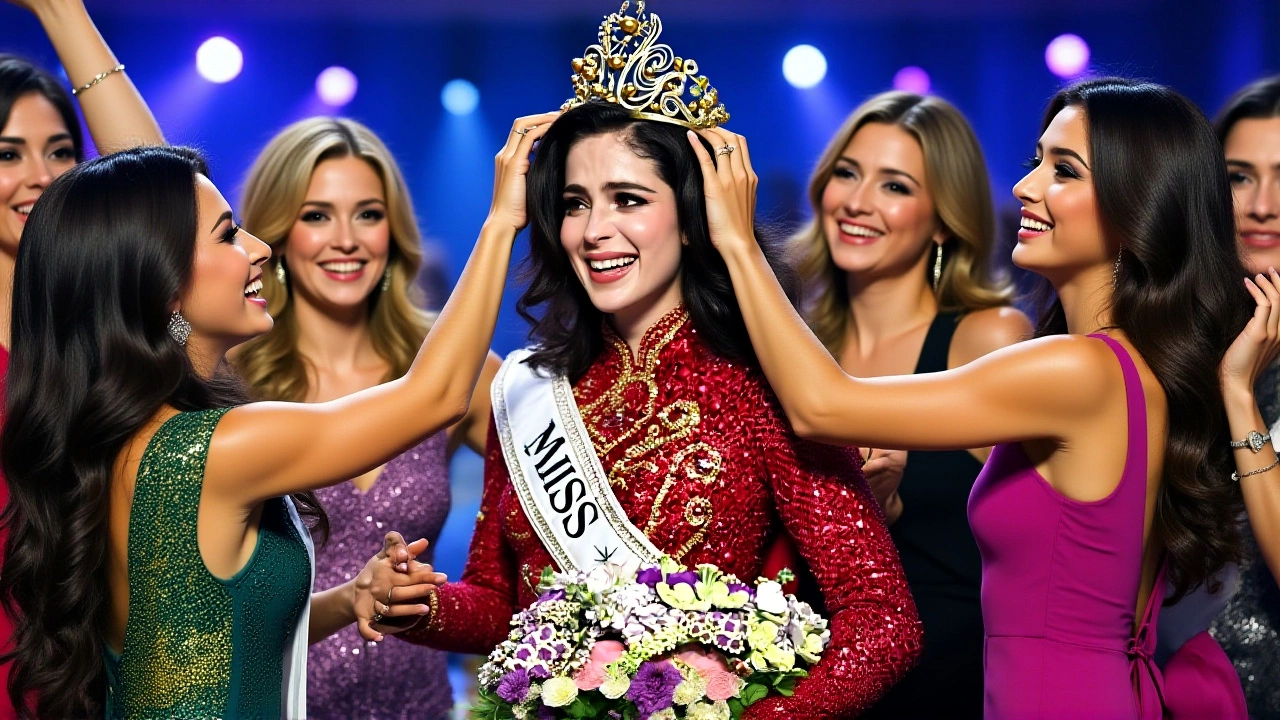When Praveenar Singh stepped onto the Miss Universe 2025 stage in Thailand, few expected her to come so close to the crown—yet not quite reach it. The 74th edition of the global pageant, held in the heart of Thailand, ended with Singh, representing Saraburi province, named first runner-up. It’s the highest placement Thailand has achieved in the competition in over a decade, and the first time since 2014 that a Thai delegate cracked the top two. The win wasn’t just a personal triumph—it was a national moment, celebrated across social media, provincial government pages, and even late-night talk shows in Bangkok.
From Provincial Crown to Global Stage
Praveenar Singh didn’t rise to fame overnight. She first won the Miss Universe Thailand 2025 national pageant, a fiercely contested event that drew over 30 contestants from every corner of the country. Her path to the international stage was paved by wins in two key sub-contests: the Best Seller Award, which automatically qualified her for the Top 18, and a strong performance in the Queen of Phuket challenge, where she placed second. Her poise under pressure, fluency in English, and advocacy for rural education in central Thailand stood out to judges. The national pageant, held in late 2024, produced a powerhouse of finalists. Praewwanich Ruangthong of Bangkok took first runner-up at the national level and won the Miss Popular Vote—another automatic Top 18 qualifier. Naruemol Phimphakdee of Phuket, the national second runner-up, is already preparing for Miss Charm 2025, her placement still listed as ‘TBD’.How the International Pageant Unfolded
The Miss Universe 2025 finals, broadcast live from a packed arena in Pattaya, featured 113 contestants from around the world. The winner, as confirmed by official results, was Fátima Bosch of Mexico—a first-time entrant whose emotional speech on indigenous rights moved the audience to tears. But the real surprise? Thailand’s finish. After years of top-10 finishes, Singh’s placement as first runner-up shattered expectations. The final five included contestants from Brazil, the Philippines, South Africa, and the United States, but it was Singh’s interview answer—about rebuilding education access in rural Thai communities—that drew the loudest applause. “It’s not about the crown,” she said afterward in a brief backstage interview captured on video. “It’s about showing the world that a girl from Saraburi, with no family in politics or showbiz, can stand shoulder to shoulder with anyone.”The Ripple Effect Across Thailand
The impact of Singh’s performance has been immediate. Tourism boards in Saraburi have already reported a 40% spike in visitor inquiries since the finals. Local schools are renaming their leadership programs after her. Provincial officials have pledged 5 million baht ($135,000) toward scholarships for girls in rural areas, citing her as inspiration. Meanwhile, social media has exploded with #PraveenarForPrimeMinister memes—a tongue-in-cheek but telling sign of her rising cultural status. Even Thailand’s Ministry of Tourism issued a public statement: “Her grace, intelligence, and quiet strength reflect the best of our nation.”
What’s Missing From the Story
Oddly enough, despite the global attention, very little official data exists. No exact date for the finals was listed in any press release. No venue was confirmed beyond “Thailand.” No financial figures were disclosed for production costs or sponsorships. The Wikipedia page for Miss Universe Thailand 2025 remains sparse, with no citations for the § symbols next to certain Top 12 contestants. And while the YouTube video titled “Miss Universe 2025: Thailand Wins!” went viral, its description misleadingly implies Thailand won the crown—when in fact, Singh placed second.What’s Next?
Singh has already begun a six-month ambassadorship with UNICEF Thailand, focusing on girls’ education in Isaan and the North. She’s also been invited to speak at the Asia-Pacific Youth Summit in Singapore next month. As for the Miss Universe Organization, they’ve quietly announced plans to host the 2026 finals in the Philippines—a shift from Thailand’s two-year hosting streak. Whether that’s a coincidence or a strategic move remains to be seen.
Behind the Scenes: The Pageant Machine
What most viewers don’t see is how tightly controlled the national pageant is. The Best Seller Award and Miss Popular Vote aren’t just gimmicks—they’re strategic tools. Winning either guarantees a spot in the Top 18, ensuring that contestants with strong fan bases and marketability advance, regardless of traditional scoring. Singh’s win in the Best Seller Award—where contestants sell sponsor merchandise—wasn’t just about charisma. It was about marketing savvy. She reportedly sold over 12,000 units of a local silk scarf line, raising 1.8 million baht for charity. The system isn’t perfect. Critics argue it favors urban, English-speaking contestants. But Singh’s background—her mother runs a small rice farm, her father is a schoolteacher—makes her an outlier. And that’s what makes her story resonate.Frequently Asked Questions
Why is Praveenar Singh’s first runner-up placement historic for Thailand?
Thailand’s last top-two finish at Miss Universe was in 2014, when Naraporn Kongsomboon placed first runner-up. Since then, Thai delegates have consistently placed in the top 10 but never cracked the top two again. Singh’s result ends a decade-long drought and marks only the fifth time in 74 years Thailand has reached the final two—making it the nation’s most significant pageant achievement in 11 years.
How did Praveenar Singh qualify for the international pageant?
She won the Miss Universe Thailand 2025 national crown, which grants the winner the right to represent Thailand at Miss Universe. She also earned automatic Top 18 placement by winning the Best Seller Award—a sub-contest where contestants sell sponsor products. Her popularity and fundraising success gave her a critical edge in the national competition.
What’s the significance of the § symbol next to some contestants on the Top 12 list?
The symbol appears on the Wikipedia page but is never explained. Based on past years, it likely indicates contestants who qualified via special awards (like Miss Popular Vote or Best Seller). In 2025, Praewwanich Ruangthong and Kamonporn Thongphon both held such awards, suggesting the symbol denotes automatic qualifiers. Without official documentation, however, it remains speculative.
Why did the YouTube video say ‘Thailand Wins!’ if Singh didn’t win?
It’s a case of misleading clickbait. The video’s title and description imply Thailand took the crown, likely to drive views. But the actual results show Fátima Bosch of Mexico won. Thailand’s first runner-up finish is still a massive achievement—just not a win. The confusion highlights how pageant coverage often prioritizes emotion over accuracy.
What’s next for Naruemol Phimphakdee, the second runner-up?
She’s set to compete in Miss Charm 2025, a rising international pageant focused on Southeast Asian representation. Her participation signals a growing trend: Thai runners-up are increasingly being funneled into other global competitions. Miss Charm has gained traction since 2023, with past winners from Vietnam, Indonesia, and Thailand—making it a strategic career path for those who don’t win Miss Universe.
How does Thailand’s performance compare to past years?
Thailand has placed in the top 10 in 17 of the last 30 Miss Universe competitions. Its best result was in 1988, when Porntip Nakhirunkanok won the crown. Since then, the country has had five top-five finishes, including 2014 and now 2025. The consistency suggests Thailand has built a strong pipeline for training delegates—especially in communication, cultural presentation, and social advocacy.
